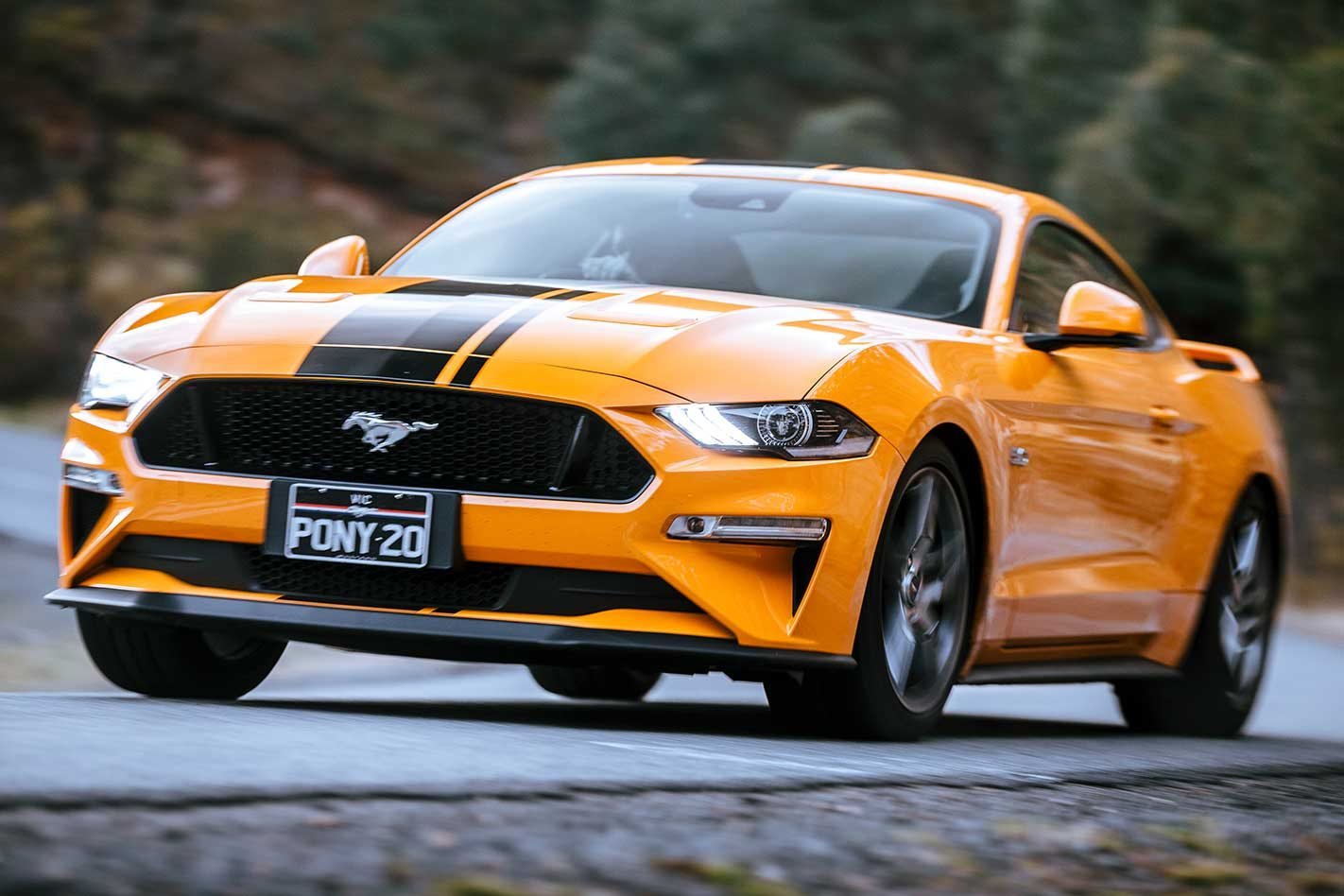Tick-tock-tick-tock-tick-tock. Indicators aren’t usually very interesting. They vary slightly in tone, volume and speed, but in almost every car they’re as even and steady as a Ringo Starr drum beat.
Not so in the 2018 Mustang; its indicators shuffle like an old-school blues band, imitating the hooves of a galloping horse: tick-tock-tick-tock-tick-tock. This is far from the most important change to Ford’s heavily revised muscle car, but it’s an indication of the thoroughness of the update. Presumably, you have to go a long way down the priority list before you get to “change the indicator tone”.
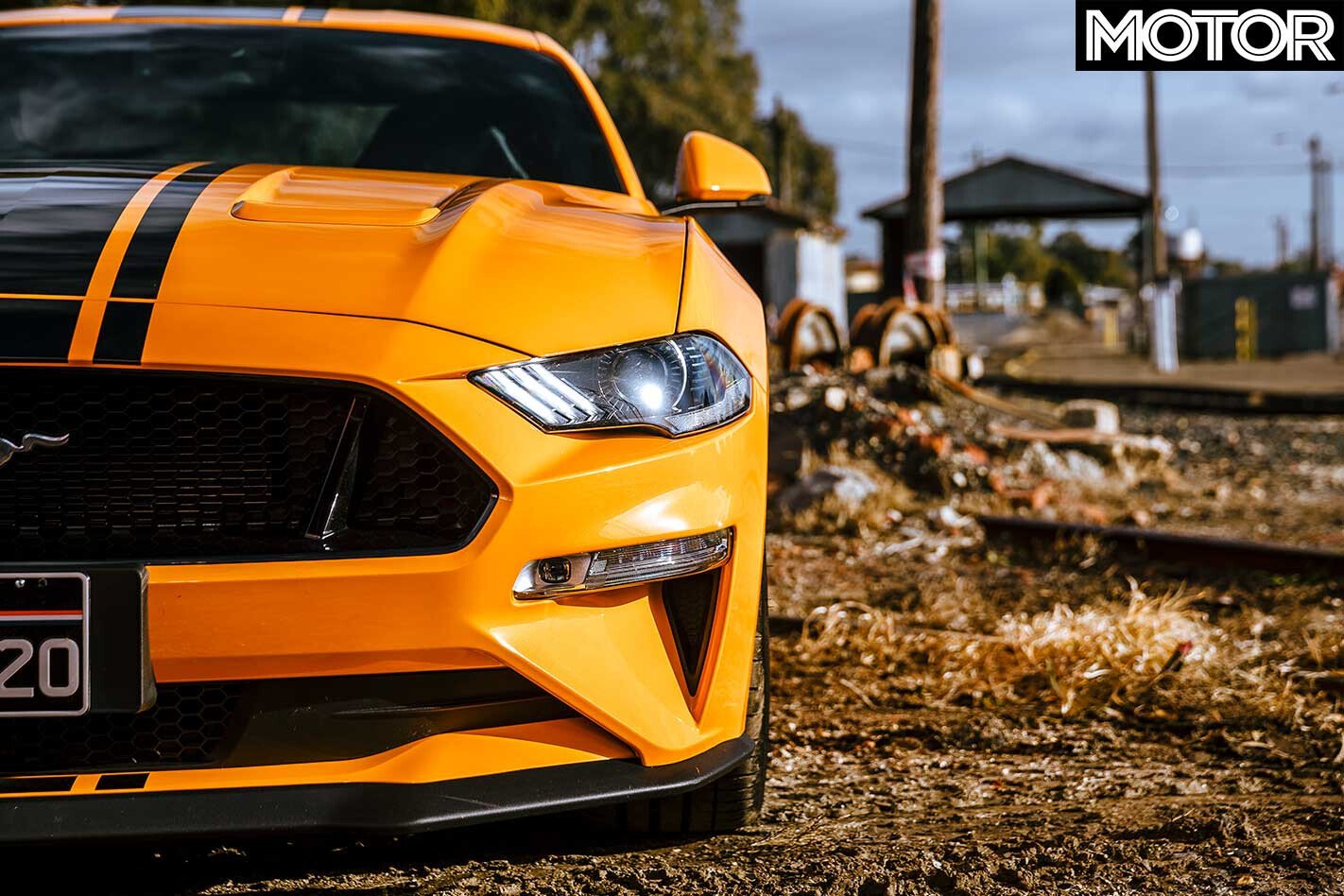
Few could have predicted just how successful the Mustang would be in Australia. Ford certainly didn’t see it coming, the onslaught of initial orders resulting in year-long wait lists as demand vastly outstripped supply.
As of May 2018, 17,779 Mustangs have been sold since its January 2016 introduction. This success only makes the extent of the changes to the latest iteration of Ford’s icon even more surprising – why radically change a winning formula?
We covered off these technical changes extensively before, now it’s time to discover what, if any, effect these changes have on the Mustang drive experience. Over the next three days, we’ll visit the dyno, the drag strip and cover hundreds of kilometres on road in an effort to definitively answer a very simple question: is this new Mustang better than its popular predecessor?

Our story starts at Ford’s Broadmeadows HQ, a few weeks ahead of the Mustang’s local launch. A pair of MY2018 cars await evaluation: a Kona Blue automatic, fitted with optional Recaro seats, MagneRide adaptive dampers and forged alloys, and an identically-specced Orange Fury manual wearing black OTT (‘Over-The-Top’) stripes and a wing spoiler.
It’s a cliché, but the new Mustang is a much better looking car in the metal than the awkward initial press photography would suggest. Narrower LED headlights are matched with a restyled vented bonnet, new bumpers front and rear, LED taillights, new grille and quad exhaust tips for the V8.
Our first stop on this journey is Herrod Performance and it’s remarkable how dated the 2018 model makes its predecessor look when parked side-by-side.
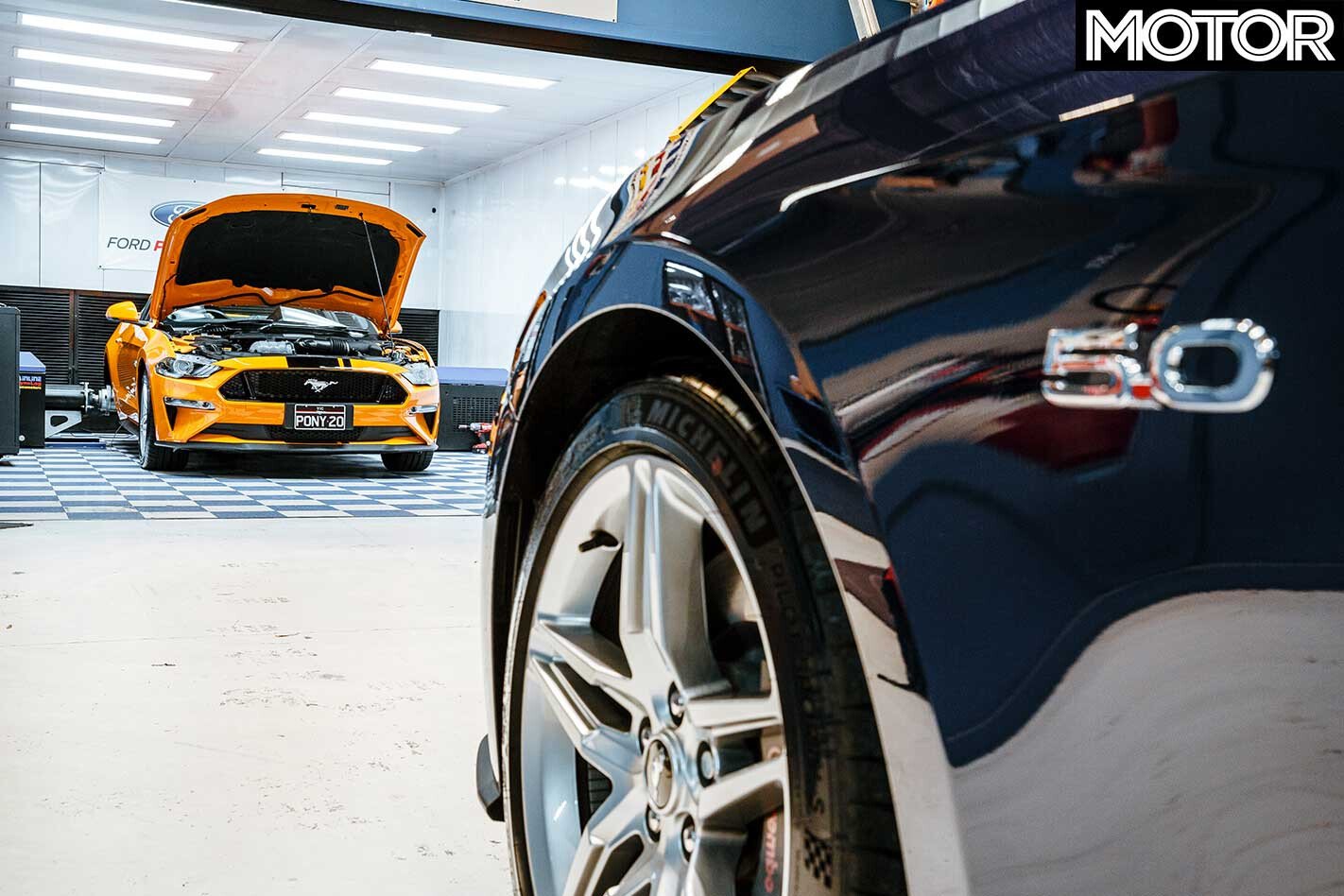
Herrod Performance has been at the forefront of local Coyote development, making them the perfect people to dyno test our 2018 cars. Rob Herrod and his team have built well over 200 ‘Compliance Pack’ supercharged Mustangs, Herrod’s close ties with Ford Performance in the US ensuring he has as good an understanding as any as to what makes Mustang engines tick.
“We’re a little bit different to most aftermarket people because I’m dealing with calibration engineers at Ford Performance,” explains Rob. “We have these avenues other people don’t have. Not that we’re trying to keep it all to ourselves, but it’s that bloody complicated!”

According to Rob’s son Chris, standard 2015-2017 Mustangs typically produce around 250-260kW on Herrod’s Mainline hub dyno, used to eliminate variables such as tyre pressure, tyre compound and strapping force. The manual is up first, Chris using fourth gear (for its 1:1 ratio) with the giant fans ensuring the intake air and cylinder head temperatures are at 18 and 90 degrees Celsius respectively.
Based on the previous Mustang, driveline loss appears to be roughly 50kW, so I’m expecting a figure of around 280kW. You can imagine the surprise, then, when the 2018 manual produces 311.6kW at the hubs on its first run. Two runs later that increases to 314.8kW and my jaw is firmly on the floor.

It’s no fluke, the auto – run in seventh (1:1) with identical temperatures – backing up the manual’s figures with 306.4kW; either Ford has developed the world’s most efficient transmissions or this new 5.0-litre is pumping out a lot more than the advertised 339kW. The entire power curve has shifted, too, a slight loss in low-to-midrange torque compensated for by a massive increase in top-end power.
The 2018 Mustang might wear the same ‘5.0’ badge as its predecessor on its front guards, but it’s clearly housing a very different engine under that restyled bonnet.
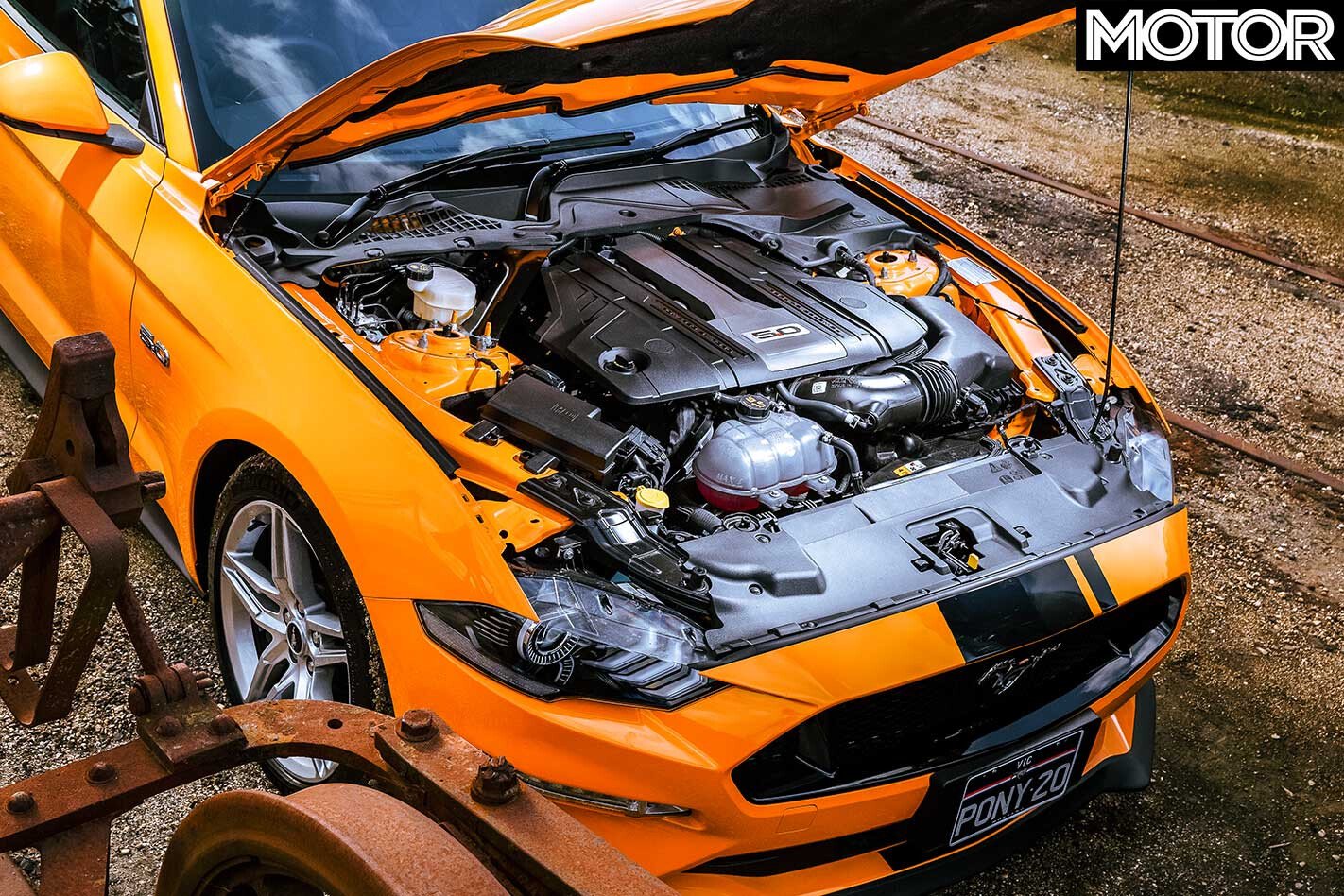
Regardless of whether the Mustang needed that extra grunt or not, it now has the soundtrack it’s needed since launch. From a deep bark at start-up – unless the neighbour-friendly ‘Quiet’ mode is selected – to a steady growl on light throttle to a crisp snarl at higher revs, like the LS3-powered VF II Commodores, it’s difficult to imagine too many 2018 Mustangs sprouting aftermarket exhausts.
The 150km drive to Heathcote offers an opportunity to assess the car’s cruising capabilities. Aussie Mustangs now feature the ‘Premium Plus’ interior as standard, including the snazzy 12-inch digital instrument display, heated steering wheel, hand-stitched centre console and wrapped knee bolster.
There’s also a new metallic starter button; small touches, but they eradicate a lot of the hard, scratchy plastic that made the previous Mustang’s interior feel so built to a budget.

Fiddling with the digital instruments, it takes some time to figure out how to navigate the various modes and screens, but there’s plenty of useful information available if you dig hard enough and the different screens for each drive mode – Normal, Sport, Track and Drag Mode – are a nice touch.
The rest of the buttons will be familiar to current Mustang owners, bar the few that have moved to accommodate the new active safety systems – Lane Keep Assist, Pre-Collision Assist, Active Cruise – vital to improving the Mustang’s two-star ANCAP rating (it’s now three).
The Recaros are snug and comfortable, though whether they’re worth $3000 is another matter. That money is possibly better spent on the $2750 MagneRide adaptive suspension. Having not yet tried a car without it, it’s difficult to say for certain, however, the 2018 Mustang rides with more fluency than its predecessor.

It’s still firm, but with sensors monitoring road conditions 1000 times per second, it no longer bounces or hops over sharp bumps. Unusually, the base damping stiffness doesn’t alter with the different drive modes, but then it doesn’t really need to.
It’s 11 degrees and overcast when we arrive at Heathcote, a little colder than ideal but the track is mercifully dry – this is possibly the most important car MOTOR will performance test all year.
Early attempts with the automatic aren’t promising: the extra power is clearly there – even with a tardy launch the trap speed is 10km/h quicker than the best we’ve recorded with 2015-2017 models – but times of 5.0sec to 100km/h and 13.0sec aren’t what were hoped for.
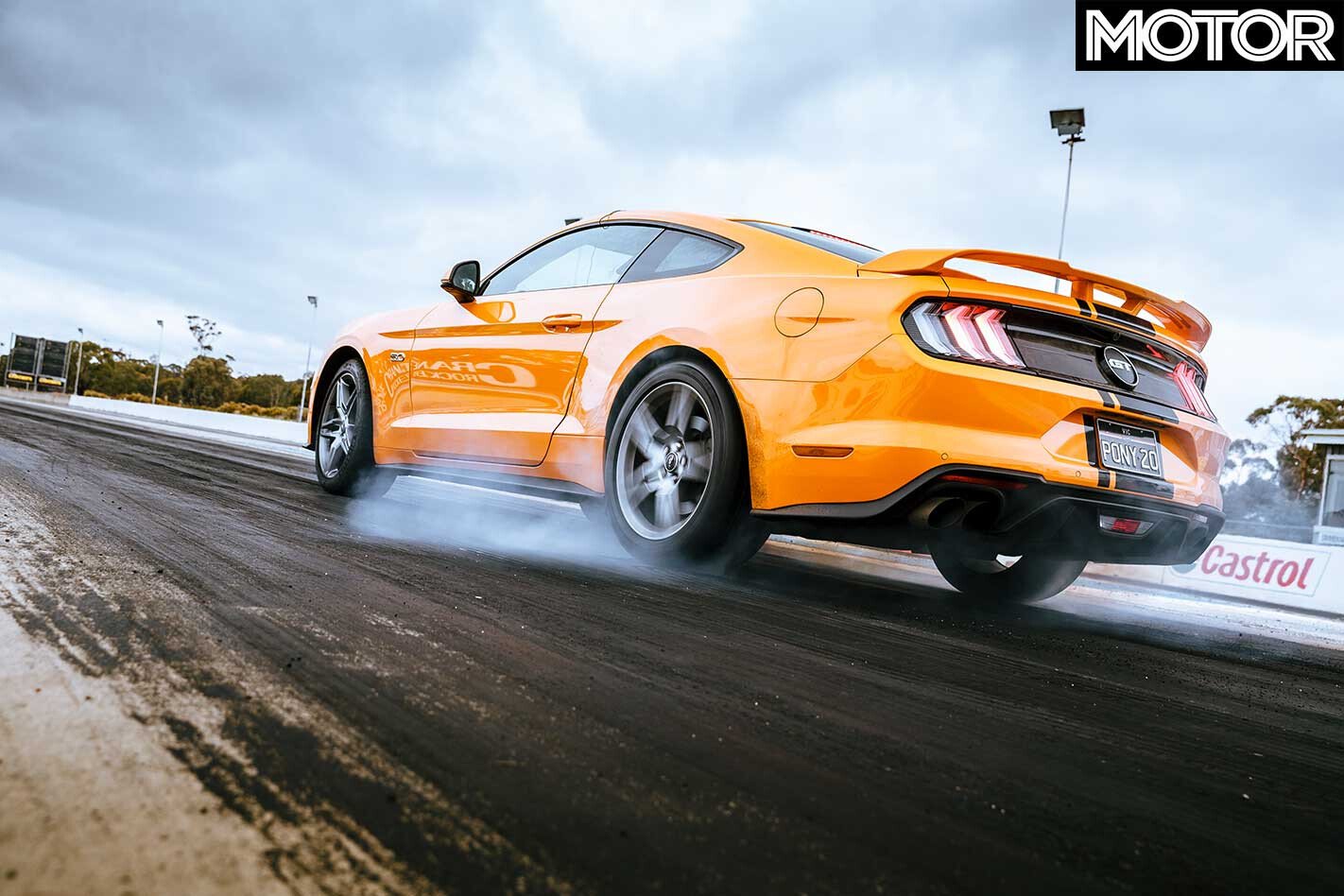
Thankfully, as the rubber builds up traction improves and with each run the stall revs creep a little higher and full throttle is reached a little sooner. As you’d hope, the quickest times of 0-100km/h in 4.53sec and 0-400m in 12.49sec at 188.16km/h come in Drag Mode with a 2100rpm stall, the maximum possible before the rear tyres start to slip.
Drag Mode also adjusts the MagneRide suspension to maximise traction and the gearshifts are savage, jolting the car to such an extent that ESP has to be fully disabled to prevent it cutting power, even on the 5-6 change.
Yes, the 10-speed auto’s ratios are so tightly stacked that it’s at the top of sixth gear as it flashes across the quarter mile mark. In contrast, the manual needs only three gears. Extracting so much more power out of the 5.0-litre V8 forced Ford to design a new gearbox and switch to a dual-mass flywheel and dual-plate clutch. It’s a great shift, light and accurate, but the ratios are l-o-n-g.
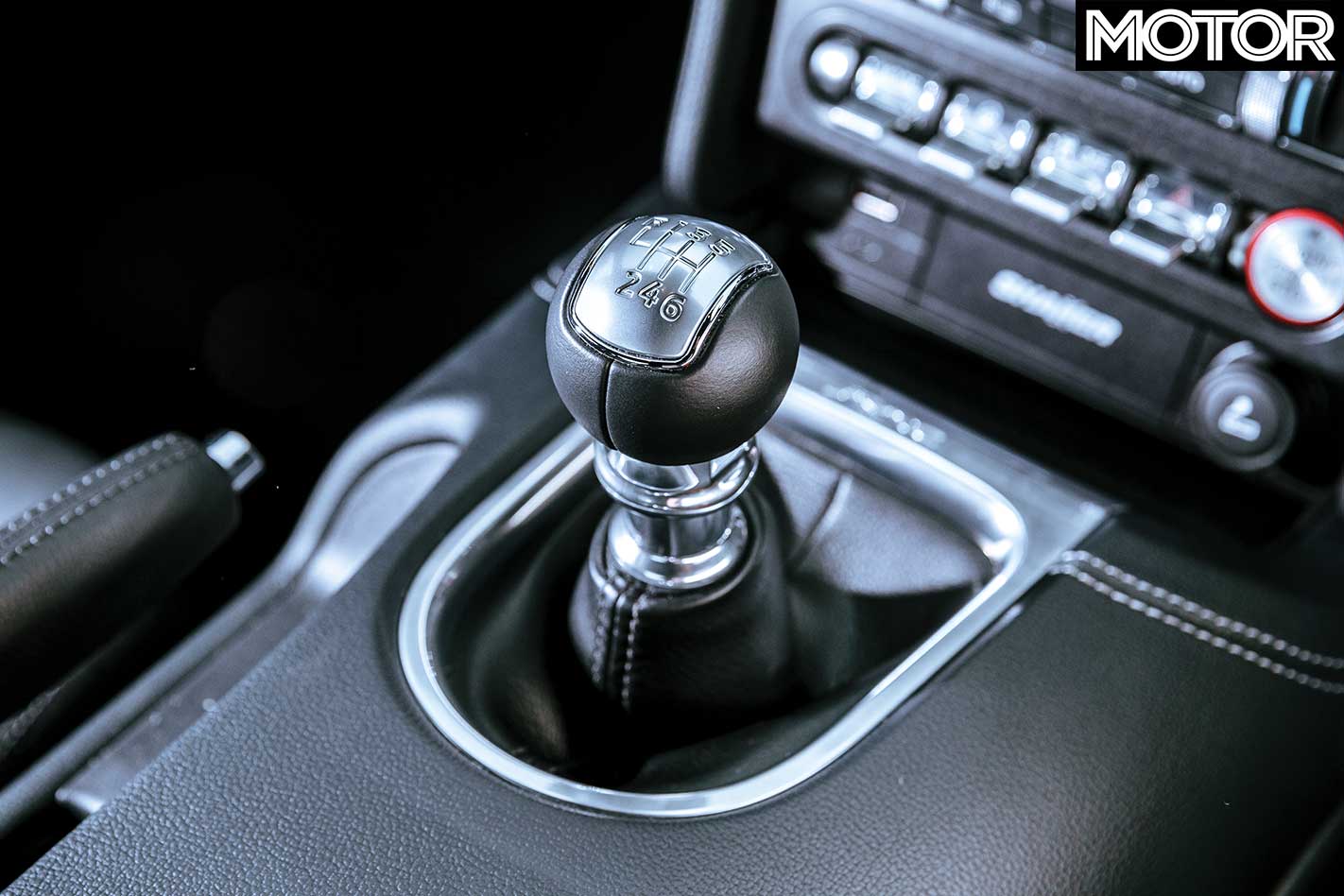
Previously, a manual Mustang’s speed in gears were 1st: 67km/h, 2nd: 101km/h, 3rd: 146km/h, 4th: 187km/h, 5th: 246km/h, 6th: 264km/h (top speed). Now, they are 1st: 85km/h, 2nd: 131km/h, 3rd: 194km/h with the last three gears irrelevant as the 250km/h limited top speed is reached 700rpm shy of the limiter in fourth.
There’s enough extra grunt to prevent the gearing feeling excessively tall, but it makes it a right pain to performance test. With such a long first gear it’s all too easy to bog down with too few revs, but use too many and you’ll vaporise the rear Michelins.
Ideally, the rear tyres would be just chirping across the surface, but this approach leads to axle tramp so vicious it’ll rattle your fillings out. As such, the manual’s best figures of 5.2sec 0-100km/h and 13.2sec 0-400m – little better than our previous bests – leave plenty of room for improvement. However, even with the tardy launches, the new car is over a second quicker to 180km/h.
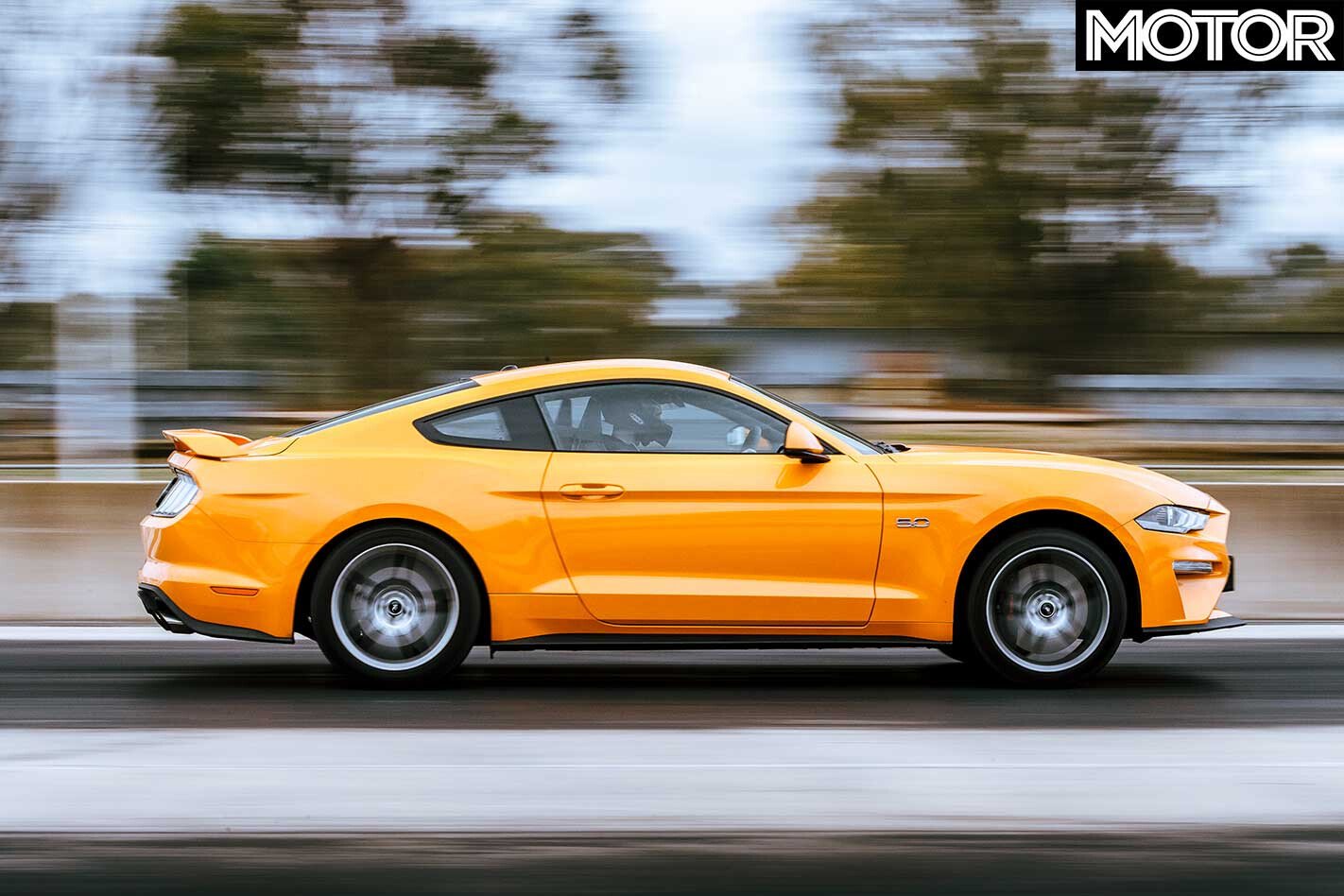
On the road your 2018 Mustang experience will depend solely on which gearbox you choose. Obviously, the gearbox itself makes no difference to the way the car handles, but it makes a massive difference to how you approach and exit a corner. The manual forces a more relaxed pace; most roads will require only second gear with the occasional shift to third, the engine extending at a less frenetic rate.
This has its own appeal, but the 10-speed auto really brings the Mustang to life. It’s a quantum shift in gearbox technology, the jump from the old six-speed like swapping a Nokia 3310 for an iPhone 7.
Its responsiveness is fantastic; brake firmly and the ’box will immediately and aggressively start firing in downshifts, rendering the paddles largely redundant. It’s beautifully decisive at maximum attack, yet will skip its way to 10th gear at just 70km/h on a cruise.
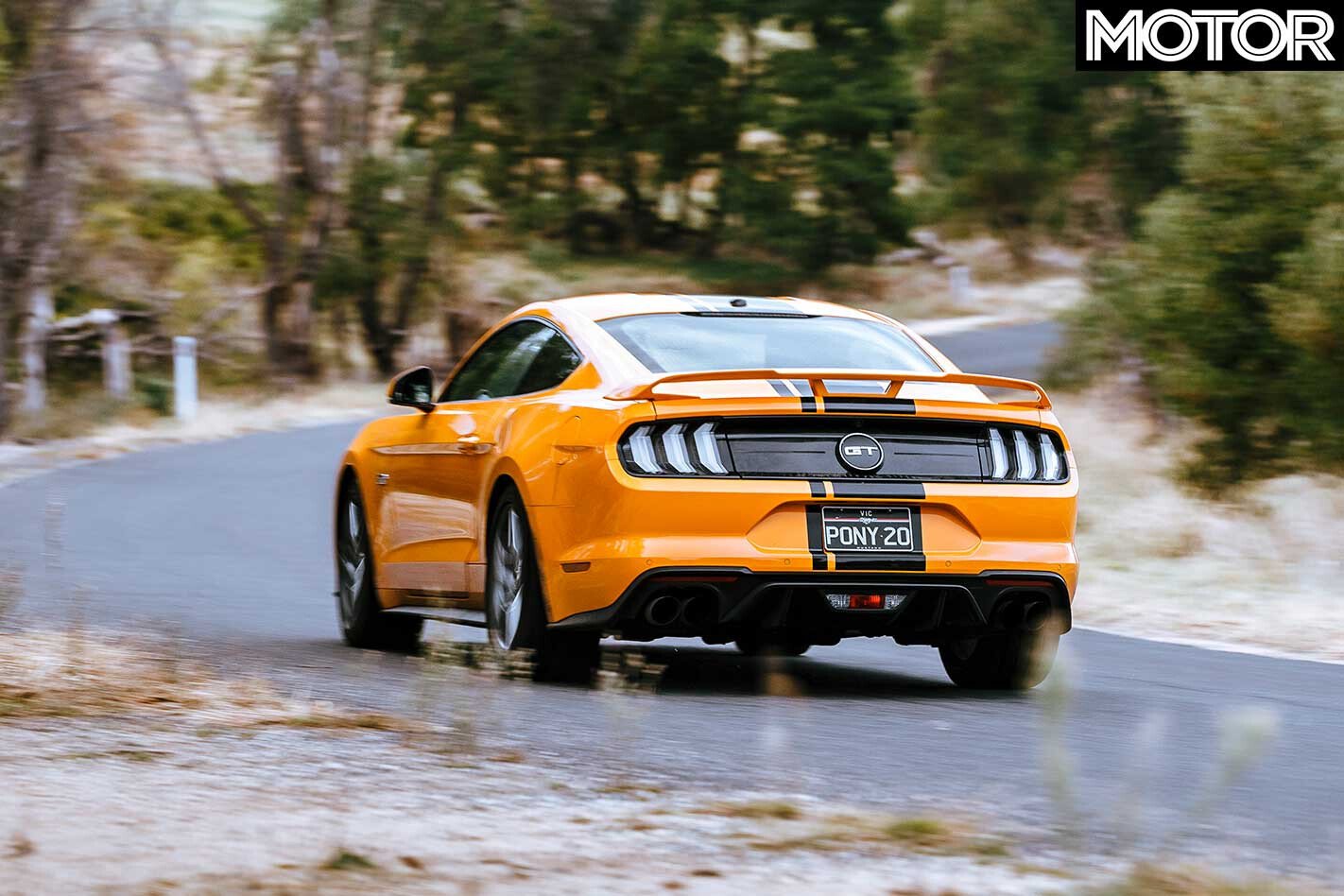
Only when you’re driving at six-tenths or so can the 10R80 be caught out, as it attempts to shuffle its 10 ratios like a Monaco croupier but inevitably drops a card or two.
Ford might have focused on the powertrain, but the chassis hasn’t gone untouched. Even without the optional MagneRide dampers there are recalibrated shocks, thicker anti-roll bars, a new rear cross-axis joint to reduce body movement, beefed up steering knuckles and Shelby GT350 wheel bearings.
All these modifications are intended to make the most of the extra grip offered by the new Michelin Pilot Sport 4 S tyres, the same as those fitted to the likes of the Mercedes-AMG E63 S and Porsche 718 Cayman GTS. Whether because of its chassis setup or Pirelli P Zero rubber – likely a combination of both – the previous Mustang could be a handful, particularly in the wet.
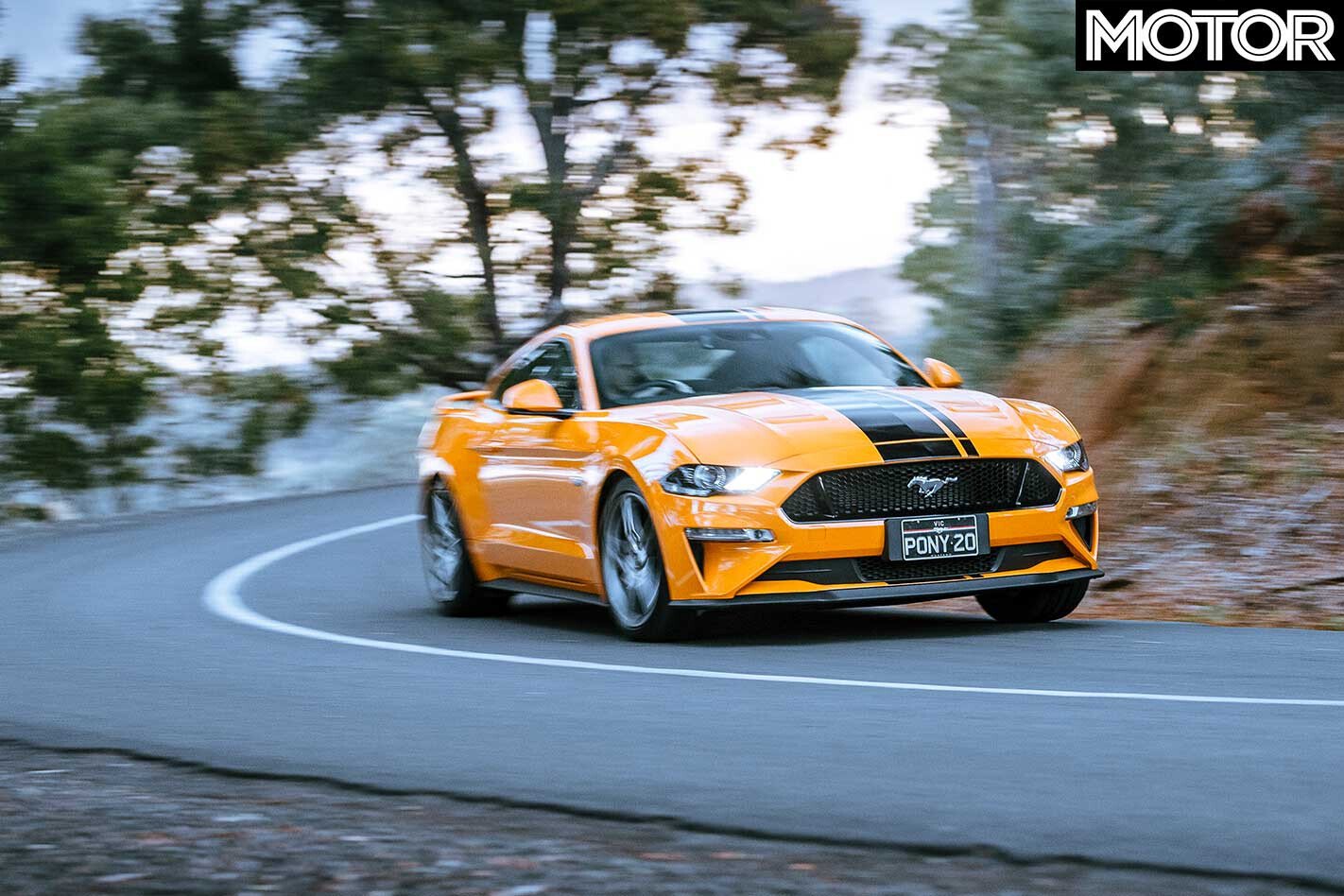
The 2018 model isn’t suddenly a razor-sharp handler, but it’s much more confidence-inspiring. It’s not a car that shrinks around you – it always feels big and quite heavy – but that’s entirely reasonable for a car of this type. Grip front and rear is markedly increased and there’s greater progression when it starts to run out.
The auto in particular is a riot, though be aware that if the rear wheels spin it’ll keep grabbing gears rather than run into the limiter – traction is limited in the first four gears on a slippery surface. Its greatest shortcoming is the steering, its refusal to weight up with lock applied robbing the driver of any connection with the front-end, but the 2018 Mustang is a better drive and rabidly fast in auto guise.

Whether Ford listened to media and customer feedback or it simply knew of previous Mustang’s shortcomings internally, the 2018 version successfully addresses virtually every one of them. It’s more polished and refined in almost every area, while also being significantly faster and more composed.
Ford is asking punters to pay a lot more money – both our test cars were well over $70,000 with options – but is delivering a much improved Mustang in return. Chances are, those indicators are merely mimicking the sound of Ford’s muscle car continuing to gallop out of showrooms.
The Numbers
| u00a0 | 2018 Ford Mustang GT | |
| u00a0 | Auto | Manual |
| 0-10km/h | 0.34sec | 0.50sec |
| 0-20km/h | 0.74sec | 1.01sec |
| 0-30km/h | 1.10sec | 1.44sec |
| 0-40km/h | 1.51sec | 1.79sec |
| 0-50km/h | 1.95sec | 2.29sec |
| 0-60km/h | 2.44sec | 2.74sec |
| 0-70km/h | 2.86sec | 3.20sec |
| 0-80km/h | 3.39sec | 4.01sec |
| 0-90km/h | 4.01sec | 4.60sec |
| 0-100km/h | 4.53sec | 5.21sec |
| 0-110km/h | 5.20sec | 5.86sec |
| 0-120km/h | 5.91sec | 6.84sec |
| 0-130km/h | 6.56sec | 7.68sec |
| 0-140km/h | 7.40sec | 8.59sec |
| 0-150km/h | 8.28sec | 9.52sec |
| 0-160km/h | 9.20sec | 10.52sec |
| 0-170km/h | 10.29sec | 11.63sec |
| 0-180km/h | 11.42sec | 12.80sec |
| 0-190km/h | 12.77sec | 14.18sec |
| 0-400m | 12.49sec @ 188.16km/h | 13.20sec @ 183.14km/h |
| 100-0km/h | 34.33m | 34.56m |
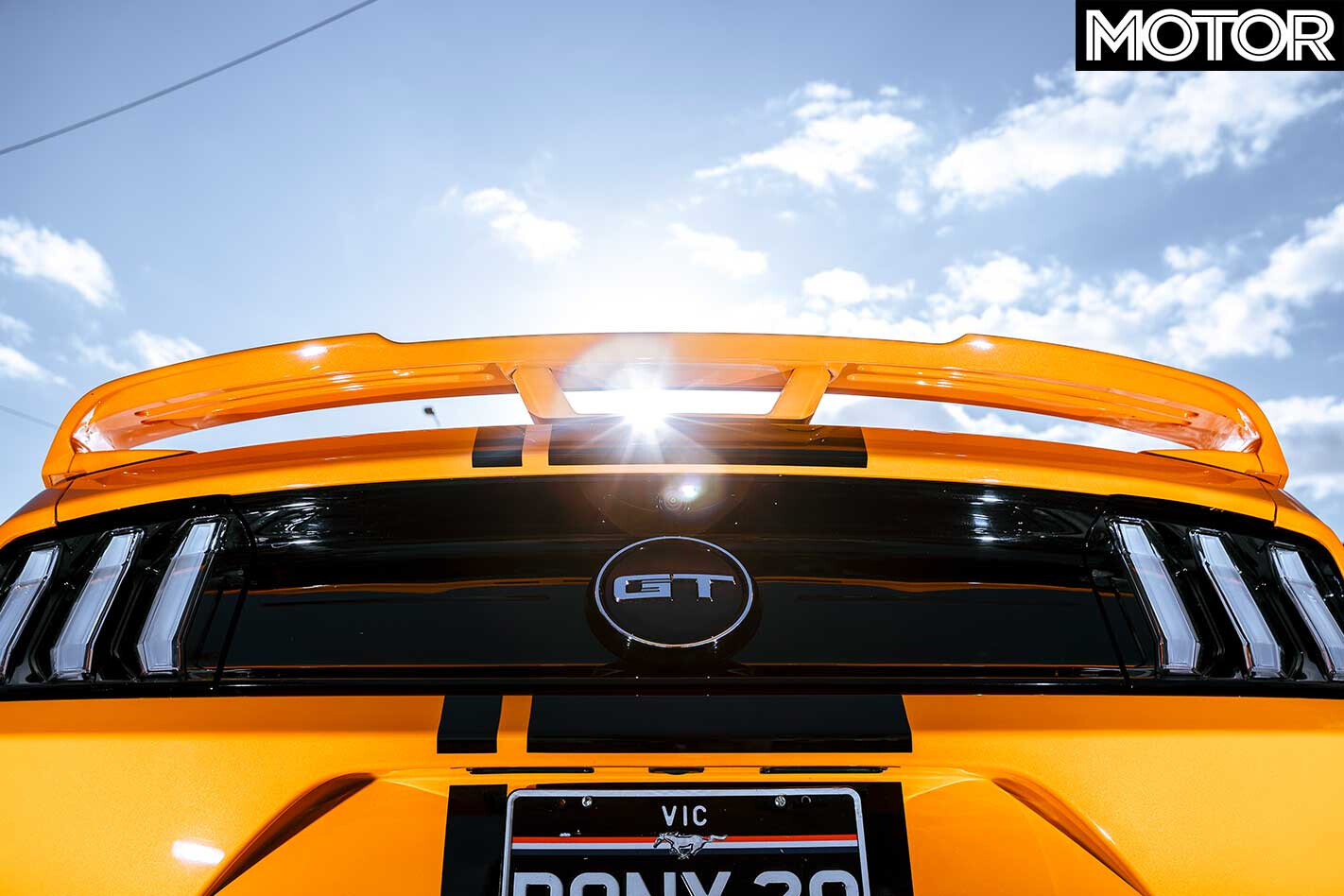
Speed in Gears
| u00a0 | Auto | Manual |
| 1st | 62km/h @ 7400rpm | 85km/h @ 7400rpm |
| 2nd | 98km/h @ 7400rpm | 131kmh @ 7400rpm |
| 3rd | 136km/h @ 7400rpm | 194km/h @ 7400rpm |
| 4th | 165km/h @ 7400rpm | 250km/h @ 6700rpm |
| 5th | 192km/h @ 7400rpm | 250km/h @ 5430rpm |
| 6th | 229km/h @ 7400rpm | 250km/h @ 4150rpm |
| 7th | 250km/h @ 6320rpm* | – |
| 8th | 250km/h @ 5380rpm* | – |
| 9th | 250km/h @ 4360rpm* | – |
| 10th | 250km/h @ 4050rpm* | – |
In-Gear Acceleration
| u00a0 | 80-120km/h | |
| Gear | Auto | Manual |
| Drive | 2.5sec | – |
| 2nd | – | 2.6sec |
| 3rd | – | 3.7sec |
| 4th | – | 6.2sec |
| 5th | – | 8.7sec |
| 6th | – | 13.7sec |
As tested by MOTOR: Heathcote Dragway, 11˚C, dry Driver: Scott Newman *Manufacturer’s claim
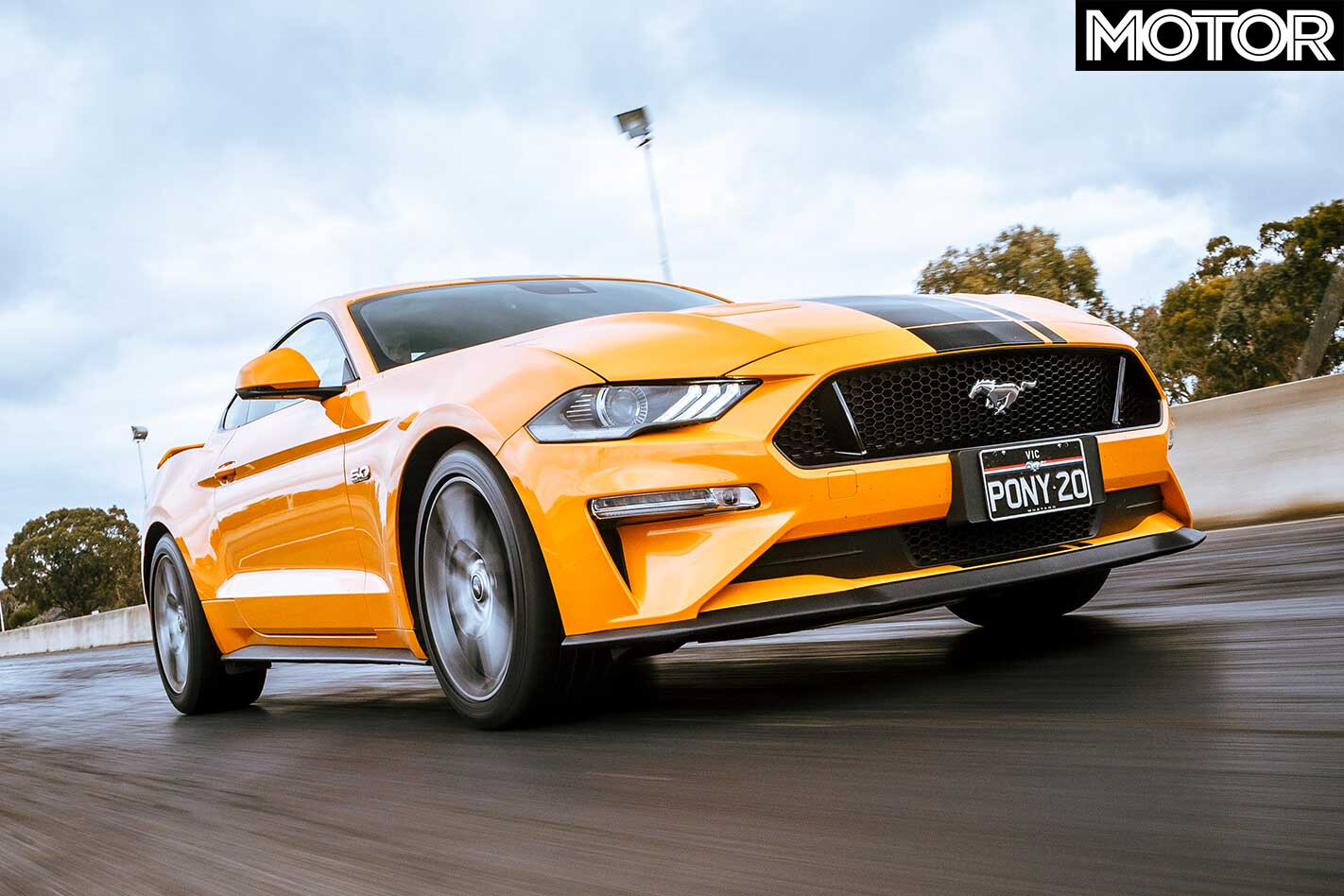
FAST FACTS 2018 Ford Mustang GT
BODY: 2-door, 4-seat coupe DRIVE: rear-wheel ENGINE: 5038cc V8, DOHC, 32v POWER: 339kW @ 7000rpm TORQUE: 556Nm @ 4600rpm BORE/STROKE: 93.0 x 92.7mm COMPRESSION RATIO: 12.0:1 WEIGHT: 1732-1756kg POWER-TO-WEIGHT: 193-196kW/tonne TRANSMISSION: 6-speed manual/10-speed automatic SUSPENSION: struts, coil springs, adaptive dampers, anti-roll bar (f); multi-links, coil springs, adaptive dampers, anti-roll bar (r) L/W/H: 4789/1916/1396mm WHEELBASE: 2720mm TRACKS: 1642mm (f/r) STEERING: electrically-assisted rack-and-pinion BRAKES: 380mm ventilated discs, 6-piston calipers (f); 330mm ventilated discs, single-piston calipers (r) WHEELS: 19.0 x 9.0-inch (f); 19.0 x 9.5-inch (r) TYRES: Michelin Pilot Sport 4S; 255/40 ZR19 (f); 275/40 ZR19 (r) PRICE: $62,990-$66,259
LIKE: Superb engine; great auto; improved handling DISLIKE: Manual gearing; more expensive; dull steering
RATING: 4 out of 5 stars


